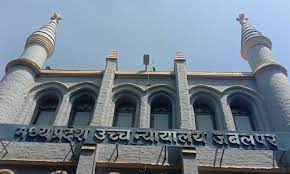Last Updated on July 22, 2021 by Administrator
By Aarushi Rajpurohit; NMIMS
Madhya Pradesh High Court recently denied the bail application of a 15-year old accused of raping a minor, aged about 10 years old. The Court stressed upon implementation of stringent laws against juveniles who commit ‘grievous offences’.
The Court was of the view that the present law to deal with cases involving crimes committed by Juveniles is totally inadequate and ill-equipped. It also wondered, as to how many more Nirbhayas’ sacrifice would be required to shake the conscious of the lawmakers of this country?
Therefore, in order to understand the Juvenile Justice Act, it is important to know the existing laws for Juveniles in such cases and the Nirbhaya guidelines.
Nirbhaya Case
The Nirbhaya Case(Mukesh v. State NCT of Delhi), involved the gang rape and the murder of a paramedical student in New Delhi in December 2012. One of the accused in the case was 17 years old at the time of the commission of the crime. Thus, owing to juvenile laws at that time, the teenager was not awarded severe punishment in comparison to other rapists. Other rapists were awarded death sentences.
He was the 5th person to commit the heinous crime of gang rape and murder of a 23-year-old girl. The report by the Juvenile Justice Board had no evidence on record to showcase him as the most brutal person to commit the crime. Therefore, he was released after spending 3 years in the reformation home.
The juvenile’s case was the most controversial case because of the heinous crime committed by him and the punishment which the Indian legal system provides to juveniles. Therefore, people raised the demand to consider the juvenile rapist as an adult in the case since it was a heinous crime.
In 2015, intelligence officials suspected the juvenile getting radicalised as he shared his cell with another juvenile who was involved in the Delhi High Court blast. Therefore, intelligence officials also kept this in mind while considering the case of this teenager involved in Delhi gang rape.
In November 2015 a month before he was going to be released Nirbhaya’s family demanded that the juvenile’s identity should be made public but his identity was never released and despite massive public outcry he was released from the correction home after 3 years.
So, this is how the Judiciary functioned in the Nirbhaya case, which is regarded as the most heinous rape in the history of India.
The massive outcry led to changes in laws levied on children in conflict with the law in 2015. Later, Lok Sabha passed the Juvenile Justice (Care and Protection of Children) Act, stating that children between the ages of 16-18 years could be treated as adults if accused of committing heinous crimes.
Definition of Child and Juvenile under the Juvenile Justice Act, 2015 and other theories related to a child offence
In the modern era, the penal laws of most countries have adopted the principle of ‘doli incapax’. This term states the presumption of innocence for children in Criminal Law and is adopted in different countries in different ways. Like in Germany and Italy, a child below 14 years is considered as doli incapax, whereas in the Philippines a child below 9 years is considered so.
In India, doli incapax is mentioned in Section 82 & 83 of the IPC and in the Juvenile Justice Act. According to this principle, children below the age of seven years cannot be prosecuted for any crime and for children between the ages of eight to fourteen years prosecution needs to prove their offence for further court proceedings.
Children Act, 1960: Section 2(e) of the Act states “child” as under 18.
United Nations Convention: The UN Convention on the Rights of Child, 1989 defines a “child” as less than eighteen years unless and until his/her age is declared under National Legislation.
The Juvenile (Care and Protection) Act, 2015 sorts the term “child” into two categories: –
· “child in conflict with law”– considers the child whose age is under eighteen and is alleged or found to have committed an offence
· “Child in need of care and protection”– are those children who are abandoned, neglected, abused, exploited or are working in conditions contravention to labour laws or have an imminent risk of marriage before attaining the marriageable age.
History of Indian Juvenile Justice System
In the present era, a movement for the special treatment of juvenile offenders has started throughout the world. In many developed countries like the U.K, U.S.A., juvenile offenders were considered as other criminal offenders prior to this. Therefore, the General Assembly of the United Nations adopted a Convention on the Rights of Child abbreviated as CRC or UNHRC on 20th November 1989.
The Convention provided civil, political, economic, social, health and cultural rights of children. Due to Convention, the Indian Legislation had to revoke the Juvenile Justice Act, 1986. Therefore, the Indian Legislature in 2000 implemented “The Juvenile Justice (Care and Protection of Children) Act, 2000”.
The Juvenile Justice, 1986 which repealed the earlier Children Act, 1960, aimed at emphasising the guidelines mentioned in the Standard Minimum Rules for the Administration of Juvenile Justice. The Children Act consists of 63 Sections, 7 Chapters and serves the purpose of providing care and protection, treatment, development and rehabilitation of the neglected juvenile delinquent.
Later, in the year 2015, the Legislature passed the Juvenile Justice (Care and Protection of Children) Act. This Act replaced the Juvenile Justice (Care and Protection) Act, 2000 and allowed Juveniles to be treated as adults if they commit heinous crimes.
Present Case
In the present case, the accused was seeking bail in the rape case. A case was filed against the boy under various sections of the IPC and the POCSO Act, 2012. Currently, the law treats any accused below the age of 16 as a child.
The bench of Justice Subodh Abhyankar said that the Legislature has not learned any lesson from the case of Nirbhaya as the age of a child is still kept below 16 years in heinous offences and thus giving the liberty to the delinquents under the age of 16 to commit heinous crimes.
The Court on June 15 rejected the bail application of a juvenile accused of raping a minor. The Court further mentioned the Nirbhaya gang-rape case and asked for the implementation of stringent laws against juveniles.
The court gave the verdict in this case after considering the fact that the accused is alleged to have raped the victim twice. He is even alleged to have threatened the victim and had forbidden her from telling others of the act. The court further noted that the safety of others would be compromised if the boy is released and “enjoyed the protection of the Juvenile Justice Act.”





















